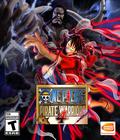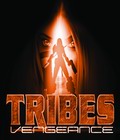Genre: Action
Publisher: Vivendi
Developer: Irrational Games
Release Date: November 23, 2004
Back in 1998 (yes THAT long ago) a certain developer called Dynamix came into the market with StarSiege Tribes, which literally took the online community by storm. Many to date still credit the original StarSiege: Tribes as the title that made the move from regular deathmatch online action into the more organized cooperative, or an early version of team-based gameplay. A few years later, 2001 to be exact, Dynamix put their not-so-finished touches on Tribes 2, which was received with mixed feelings, not due to it being a bad game, but mainly because of a bug-infested final product plagued by performance issues. That same year, publisher Sierra shut down the developer.
The Tribes franchise has been known for developing multiplayer gameplay modes that are different from the norm. While you can still go berserk in regular mano-a-mano action, Tribes has also tried to shift the focus on working as a team in order to achieve an objective, and it looks like new developer Irrational Games is following the same path. Irrational Games may be a newcomer to the Tribes universe, but they already have quite a few titles under their belts: classics such as System Shock 2, the more recent Freedom Force and its sequel, Freedom Force vs. the Third Reich. To top it all off, they wanted to make sure they got things right and hired Tribes connoisseur Michael Johnston.
Last night, Vivendi Universal held a press conference in San Francisco's Metreon to unveil some more details on their latest Tribes title, Tribes: Vengeance, and of course, we were in the front row to check it out. Australian developer Irrational Games was onsite to tell us how the development was progressing, what has been completed, what still needs to be done, what to expect, and tons of other tidbits.
As most people know by now, Tribes: Vengeance will not only focus on multiplayer action in huge outdoor environments, but also sport a full-fledged story-driven single player campaign. The story is set in the original StarSiege: Tribes universe, and although it is pretty linear in progress and outcome, it will allow you to follow several characters in different timelines (about 20 years apart).
Being a hardcore Tribes player himself, Johnston explained that during development, Irrational Games listened to feedback from old school Tribes players -- as well as newcomers -- to see what needed to be worked on, left out, and so forth. In the end, it came down to four major guidelines that needed to be addressed.
Movement. Focus testing, feedback from old players, especially the new generation (who are used to playing BF1942, etc.), has shown that the controls needed to be improved, so the developments team has worked on better air and jetpack control. Accelerating in order to pick up speed was proven too difficult and has been addressed and the "skiing," sliding down ramps or other downward angle contraptions, has remained intact.
Large Maps. In these days of quick round-based action games, a lot of the feedback pointed out that Tribes was sometimes too slow. New players who joined a multiplayer game often complained that they did not find the action fast enough, which had a negative impact. Often, people did not bother to learn the hows and wheres, but instead decided to leave the game and forget about it. This time around, IG will keep the large maps but also include smaller maps, creating specific content for a specific number of players. The game will feature maps suitable for anywhere from two to 32 players, with specific game modes that will allow the players to enjoy the maps and find instant action
Too Much "Stuff." Feedback once again showed that in ways, the game was too complex and certain subtleties were never uncovered by a majority of players (an example was given of how most players were not aware of the sensory system, which would reduce visibility if destroyed). The game will be made somewhat simpler to appeal to a broader audience without compromising the complexity of the game, so it wouldn't be too easy for the hardcore fans.
Bugs. Tribes Vengeance has totally new code and uses the next-gen Unreal Engine, which has been tweaked up to the extent that it is almost an in-house engine. The Havok physics engine has been implemented, as well as bump mapping, pixel shaders, terrain optimization, and so forth. At this point, Johnston revealed that in order to make sure that they ship the best possible product, a public beta test will be held prior to the game's release (featuring one map), so that community feedback would further allow them to squash bugs and inconsistencies.
Afterwards, we were treated to a movie collage of ingame footage with various locations, weapons and acrobatics, but then the real fun began. We got to see some singleplayer levels, including a huge outdoor landscape where the objective was to destroy several turrets that were protected by a slew of enemies. You play as Julia, an Imperial Guard soldier, backed up by a large teammate who is fitted with a long-range mortar weapon to destroy the turrets while you fend off the guards protecting the base. In this early stage of development (the title is slated for Q4 2004), the enemy AI already seems quite capable of putting up a good fight, properly using their jetpacks to change positions, attack from various angles or come at you from the air. Your teammate followed at a safe distance, picking off the objectives from afar with his mortars which exploded with a "vengeance" upon impact. After that, we got to see a large indoor section, which showed off some sort of control centre with tons of tunnels, ramps, connecting bridges, and once again, tons of enemies. One of the objectives of the singleplayer campaign is to make people familiar with the controls of the game, so the transition to the multiplayer portion of the game will be more seamless.
Next we got to see a few multiplayer maps, ranging from a large urban city in ruins, a smaller arena map with cheering fans to give you a "sports" feeling, rocky canyons, wastelands, underground/cave map, to an Alpine setting and a specific map called "Fort," which was the focus of the multiplayer presentation.
IG had also given us some more details on the multiplayer game modes available, in particular what they called the UGM, Unified Game Mode, which basically means that each map is suitable for several specific game modes. An example was given with the "Fort" map, where it was initially shown as a standard CTF map, and a few moments later, without any major changes at all, the CTF game was changed into a Rollerball-like setup, with goals and ball included. To top it all off, you can combine BOTH game modes at the same time, on the same map.
After the presentation was over, it was time for some hands-on game time through an eight-computer LAN setup, featuring the previously mentioned "Fort" map.
To give Tribes Vengeance a little variety on the usual "class" selection for multiplayer games, Irrational Games lets you choose between three armor types (heavy, normal and small). Each of these has its specific strengths and weaknesses, as heavy armor protects better but makes movements considerably slower, and vice versa. On top of that, you have a choice of "packs," most of which were not disclosed, with the exception of a "repair pack," which leads us to believe that you can function as a sort of engineer or medic. The inventory screen where you select your armor, packs and weapons has been enhanced over previous Tribes titles, so you can now see right away what your setup will look like, as well as giving you some minor descriptions.
Tribes Vengeance will feature nine to 10 different weapons ranging from a shotgun type "blaster," a chaingun (gets overheated, resulting in temporary malfunction), a TRON-like rotating disc launcher, the previously-mentioned mortar gun, the mandatory sniper rifle, and a few more still-undisclosed goodies. Each armor has a distinct and unique weapon only available for that specific type (for instance, only the heavy armor class will be able to use the mortar gun).
The "Fort" map is an outdoor setting where you basically have two spawn points on opposite sides of the map, trees and vegetation swaying slightly from the wind, a rugged terrain with small rolling hills surrounded by realistic looking water. The HUD is quite simple, with the upper left-hand corner displaying a jetpack (blue) and health/armor (red) bar and the upper right-hand corner showing a radar with locations of objectives, enemies and friendlies. On the bottom of the screen, you have three weapon icons, highlighting the weapon currently in use. Sound was implemented, but most of the SFX were either not optimized or lacking at this stage of development, although it needs to be noted that jetpacks sound distinctively different depending on the type of armor you use (heavy armor has a heavier jetpack sound).
Our final conclusion? The game handled well, controls were simple, responsive and effective, the graphics looked great, and there were a wide variety of settings and maps and a ton of interesting multiplayer modes. The only disappointment of the evening was that we only got to spend an hour playing this game, although it was an hour well spent. With several months to go, Irrational Games looks well on schedule to meet their Q4 release date and said that most of the remaining time will be spend optimizing, polishing and fixing the bugs in the game so that they will have an impressive final product.
More articles about Tribes: Vengeance

































